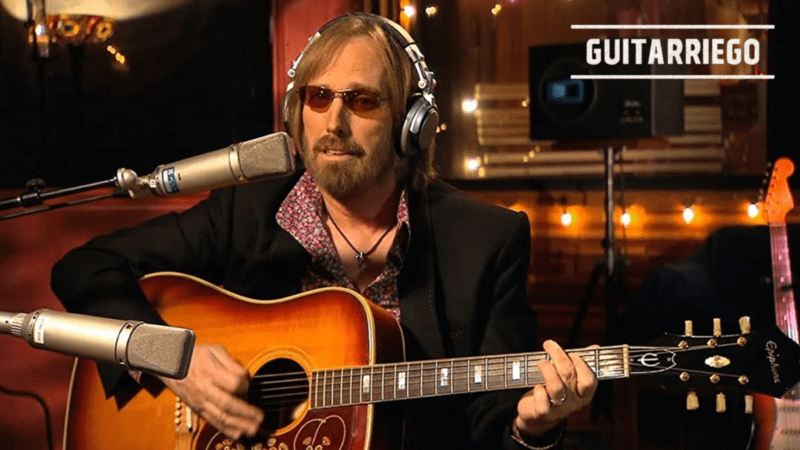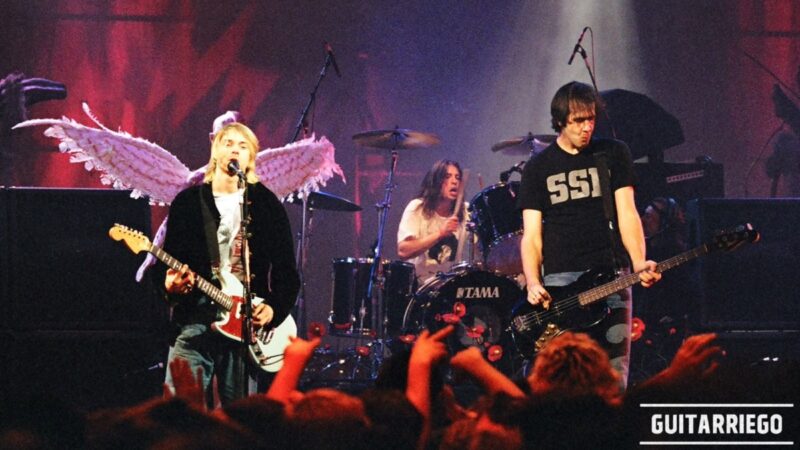Copyright for YouTube guitar channels: what you can and can’t use
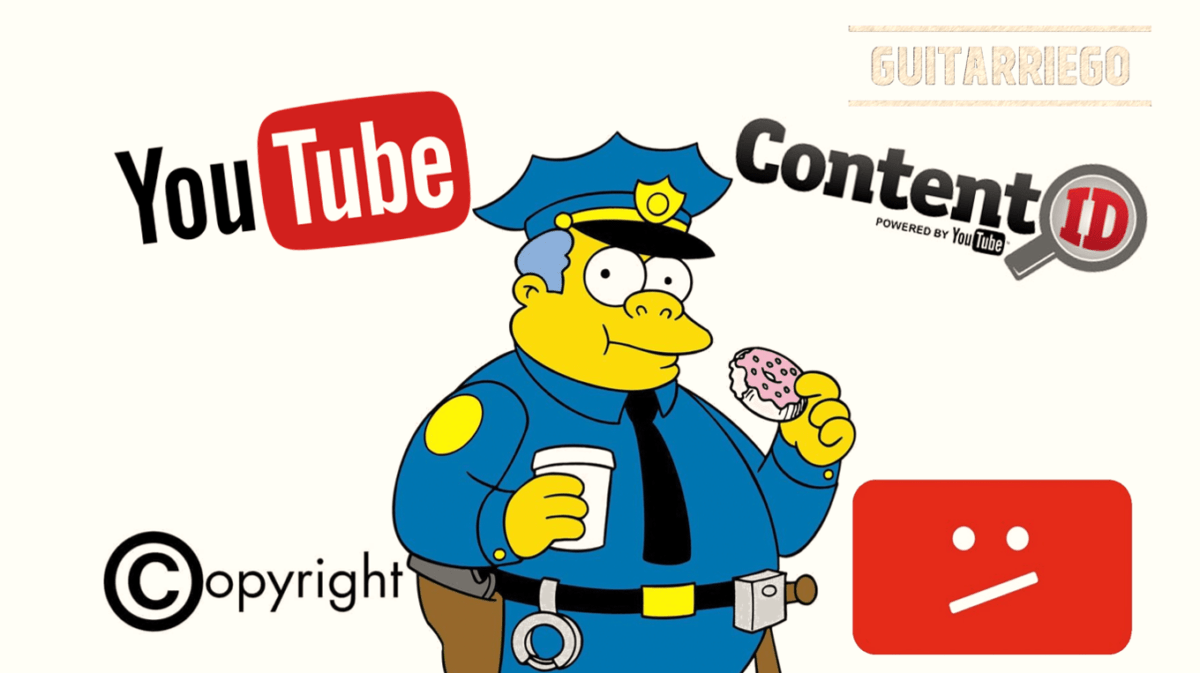
Do you want to be a youtuber? This guide is for you, what you can and can’t use related to copyright of music on your YouTube guitar or bass channel.
Copyright on Youtube
Copyright refers to the legal right to exploit a literary, scientific or artistic work for a certain time. Thus, copyright is the right to copy. This means that the original creators of products and anyone they give authorization to are the only ones with the exclusive right to reproduce the work.
The copyright ranges from literary, musical, graphic works such as paintings and photographs, trademarks and much more. When you upload a video to YouTube, you should be careful not to infringe copyright by uploading copyrighted material, or at least avoid detection.
Copyright for YouTube music or guitar channels
There is a very interesting approach by Youtubers that are used to dealing with copyright claims for the use of copyrighted music material, mainly songs. The key is not just in obey the law but not to be detected. Let’s see.
The legal and practical -or technological- fight of copyright
This dispute occurs in two different dimensions or perspectives: the legal and the practical or technological, that is, what happens in practice, which affects so much music dissemination channels of musicians and guitarists.
The legal perspective
The first is to identify when we are lawfully using or infringing copyrighted material. Actually, we are constantly making, uploading, using or sharing copyrighted material.
When do we use copyrighted material?
We constantly use copyrighted material when:
- Photos copyrighted by photographers,
- Movie images,
- Memes with characters from Disney, Marvel, etc.
- Music both its audio and video.
In some cases its use may be legal, but in many cases we are copyright infringers. Later we will see how to identify when we make legal or illegal use of third-party copyrighted material.
[su_box title=”Use of copyrighted third party material” box_color=”#e80202″]We constantly use material subject to copyright or copyright when: Photos registered by a photographer, movie images, memes with Disney characters, Marvel, etc., and music, both audio and video.[/su_box]
The practical or technological perspective: YouTube and copyright
YouTube has Content ID to control and ensure that copyrighted or copyrighted material is not used illegally, but beware, Content ID does not detect if that use is valid or legal or not, and this is why this is so important perspective.
How does YouTube control the use of copyrighted material?
YouTube uses a content filter called Content ID.
What is the YouTube Content ID and how affects Copyright?
Content ID is YouTube’s automated system that allows copyright owners to identify videos that contain their own content. As expected, YouTube only grants access to Content ID to copyright owners who meet specific criteria.

Thus, the owners of copyrighted material are informed each time their proprietary material is used. The owner can have defined by default block or request the full or partial monetization of that video. Although you can also do manual control and define one by one the treatment of each material. It sounds reasonable, but we’ll see that it can be a bit wicked for YouTubers at times.
Copyright control on YouTube
Thus, YouTube automatically performs a generalized content control in which it treats in the same way those who make use of copyrighted content in a legal and lawful way, such as for didactic use, criticism or analysis, dubbing, parody or memes , from which illegally uses copyright such as hacking. In other words, Content ID only detects whether or not there is copyrighted material in your video. In case Content ID detects any third party material, you may lose the monetization or even your video may be blocked.
That’s why it is as or more important that you understand the practical or technological dimension than the legal one. To be able to bypass Content ID filters and deal with copyright claims. It may even happen that your content may be affected by a false positive.
When is using copyrighted material legal or illegal?
The legitimate, lawful or just Fair Use of copyrighted material varies from country to country. But at a general level, both in Europe and the United States it is allowed for didactic, educational or informative use in the United States.
Fair Use of Copyrighted Material on YouTube
Fair Use and European legislation allow the use of a piece of third-party content to:
- Quotes,
- Reviews / analysis
- Parody / cartoons
- Memes / Pestiches
Illegal or illegal use of copyrighted material on YouTube
- A mere copy of the copyrighted material
- Try to monetize it
- Large, long-term use of copyrighted material
- Main focus is on copyrighted material
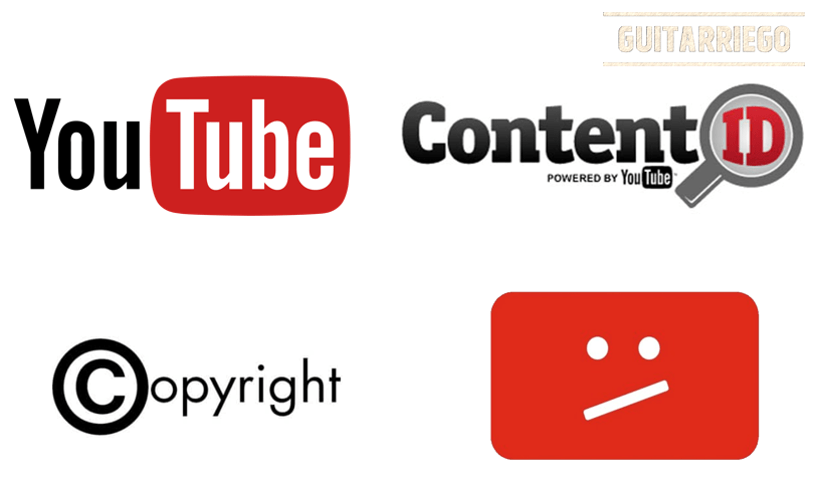
Myths about the fair use of copyrighted material
There is a lot of confusion in the matter, since as we saw before, sometimes the legal plane is mixed with the technological or practical. Thus, over time myths have been generated about what is allowed to make valid use of copyrighted material.
[su_box title=”Myths about the legal use of copyright” box_color=”#e80202″]
- There is a maximum time in which you are allowed to use copyrighted or copyrighted material.
- Everything that is published on the web is available for your use.
- If it doesn’t say that it has the reserved rights, I can use it.
- [/su_box]
Let’s demystify, the legitimacy of the use of the material does not depend on its length or duration, but on its purpose. By only using a few seconds or only a fragment of third-party material, without applying one of the permitted cases such as educational, informative, parody, etc., the use of the material will not be lawful. The confusion comes because the less time the material is reproduced or the more fragmented it is, the less chance of being detected by the Content ID content filter.
Copyright and video title
Another aspect that you should not neglect is the title. Since copyright owners can detect the use of their property by the words in the Title associated with their work, that is, the name of the song, the musical group or one of its members, among other data .
Here, there really is a significant risk and danger, which can even mean the loss of your channel. When a record company, producer or any copyright owner makes a manual claim, YouTube can put a Copyright Strike on you. Since if you hit three strikes in 90 days, YouTube closes the channel automatically, regardless of whether the use of the copyrighted material was legitimate.
[su_box title=”Risks of using copyrighted material on YouTube” box_color=”#e80202″]If you receive three Strikes within the 90-day period as a result of copyright claims, YouTube automatically closes your channel.[/su_box]
YouTube Copyright Strikes and consequences
Strikes can be for copyright or other infringements. The first time you post something that violates YouTube’s rules, you will receive a warning, but you will not have any penalties other than removing the content. YouTube wants you to learn or review the policies of the video platform so that you do not violate them again in the future.
From the second offense, you may receive three strikes. Each will expire after 90 days. With the first strike, YouTube will freeze your ability to upload or upload new content to your channel for seven days. If you receive a second strike within the 90-day period of the first, you will not be able to upload any new content to the platform for two weeks. Finally, if you receive a third Strike within the 90 day period, YouTube will close your channel.
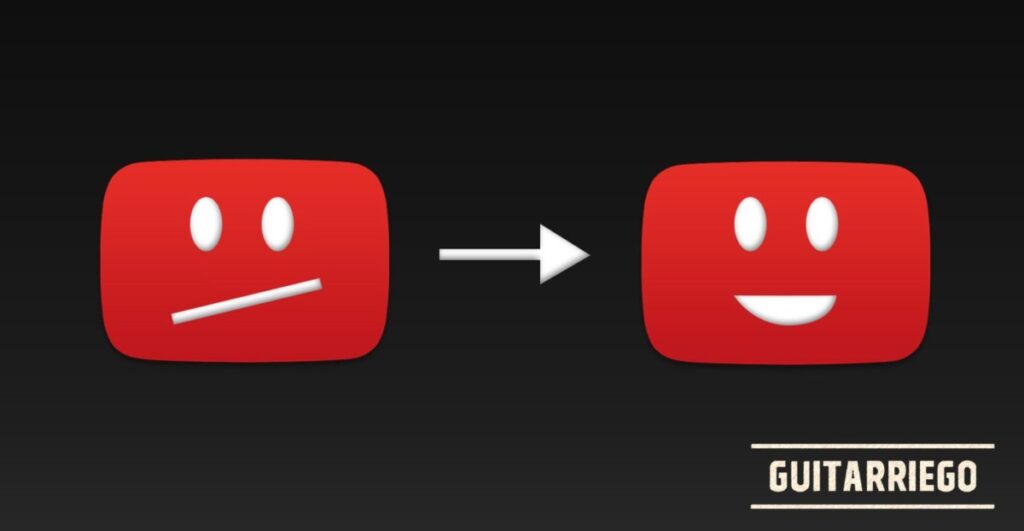
The song covers on YouTube
We see millions of covers of well-known songs on YouTube, many recorded professionally, others at home; however, 99.99% of them are illegitimate use of copyrighted material.
Purchasing the rights to use a copyrighted song in audio is a very simple, standard, and relatively inexpensive process. But this is valid just for audio reproduction in audio, not in video ones. In the case of video, there is no standard procedure or way to do so. You have to make a custom contract or agreement with the record company or production company directly yourself. Quite simply, very few people do this. That is why we can affirm that practically all the videos of covers of songs with copyright on YouTube are infringing the intellectual property rights of the owners or authors of the material.
So why doesn’t YouTube or record companies delete cover videos automatically?
Perhaps due to technical inability -since there are thousands of videos- or just political decision. The Content ID does not have the ability to recognize a song when it is not played by another person in a very similar way. Another reason may be that most are not monetized by those who upload it and maybe the record company starts to monetize them without us knowing.
I can upload a song cover to YouTube then, right?
Nobody can really assure you of anything. It’s a lottery, there is a small portion of song cover videos that have been blocked, why? No one can say for sure. In other words, when you upload a video playing your favorite song, you run the risk of being blocked by the copyright owner of that song. Each owner has his personal position, some companies are more restrictive and aggressive, others are more flexible and permissive.
Complying with Copyright
Maybe you prefer not to be playing on the edge, fighting Content ID, and want to minimize your risk by uploading a video without third-party material. But be careful, you reduce the risk, you do not eliminate it, since you can have a false positive, and as we said before, some record companies are aggressive and uncompromising and may not want to unblock your content even if it was a content filter failure.
Fortunately, there are tools available to help you comply with Copyright.
So how can I avoid copyright infringement on YouTube?
YouTube offers two very practical tools Music Policies to be able to identify material with copyright or not; and Audio Library with copyright-free audios.
Also, you can go further with high quality and professional content: Epidemic Sound -see more info about it below-.
Youtube Music Policies
This YouTube tool allows you to see what YT is going to do with your video if you use a certain song. In other words, it has a huge library with famous songs and their usage restrictions and consequences.
For example, when using a song or making a demo of it in your video, it can be allowed to view or blocked; Regarding monetization, it can be without monetization, that is, the author takes the money generated in it, or share the billing of the video with the owner of the material.
Audio Library or YouTube Audio Library
Audio Library has free copyright songs and sound effects that you can use without restrictions.
Both Audio Library and Audio Policies are found within YouTube’s Creator Studio, within Create.
For more information subscribe to the YouTubers Creators channel. It contains a lot of useful information, but it is in English. Below you can see one of the videos:
Epidemic Sound: quality music for your YouTube videos
Epidemic Sound is a Swedish company that pays artists between EUR 1,500 and EUR 3,000 for each song and their rights. The company then licenses all its music to content creators in exchange for a monthly subscription of EUR 13. It features all kinds of musical styles, even soundtracks. If you unsubscribe, you will not lose the rights to the material already used, that is, you will keep it for life.
The music is of such quality that the company also uploads it to Spotify and distributes the revenue from its reproduction at 50% to Epidemic Sound and the authors of the songs or musical pieces. Thus, there are famous top trending songs on Spotify that emerged from Epidemic Sound. Some examples are: In and Out of Love (Tigerblood Jewel Remix) by Martin Hall feat. Tigerblood Jewel and Faster Car by Anders Lystell feat. Kaliber.
Another aspect to highlight, you can download the songs by tracks and take out an instrument if you wish, achieving a «customization» of the song.
Test, test and test
As you have seen, there are cases where a video with legitimate use of copyrighted material can be blocked on YouTube; while others with illegitimate use do not suffer any consequences.
At the end of the day, you should focus on the práctical and technical level, rather than the legal one; Since in a practical sense, this dimension is where this daily dispute basically plays out and can affect your YouTube guitar or bass channel.
Try modifying the images or using a song for a short time, to check that the Content ID does not identify the copyrighted material. Also, use test accounts or secondary channels to see what happens before uploading them to your main channel. Consider the risk involved in including a word in the title that allows the owners to detect your video and make a claim. You do not want to have problems with your channel and even suffer its closure by three strikes.
As you will see, it is not an easy or simple subject, but it is not that terrible either. You have to manage it to be able to publish content that does not suffer restrictions or blocks from YouTube content filter.
Have you uploaded videos to YouTube? Have you had a copyright problem? How did you solve it? Leave us your experiences in the comments.
For more information visit the YouTube support page .
Guitarriego, the best magazine for guitarists and bassists.

